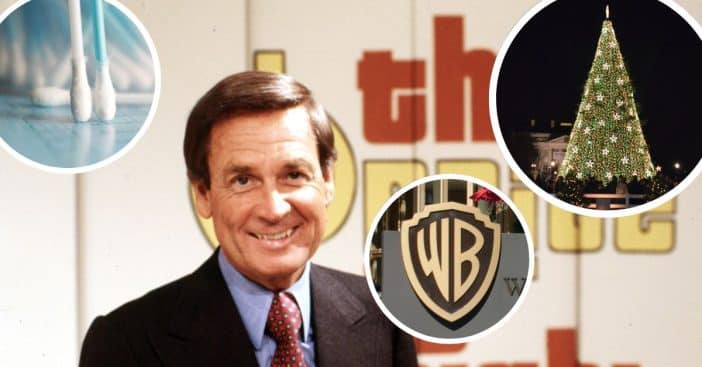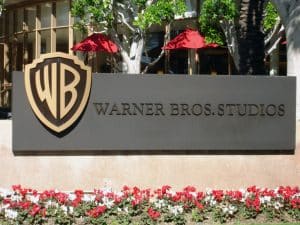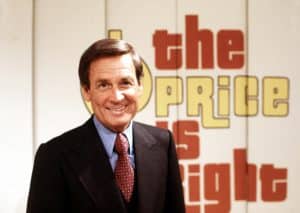
What do the Walt Disney Company, Yankee Stadium, and the National Christmas Tree all have in common? They are just some of the American cultural icons that turn 100 in 2023. It turns out 1923 proved a very formative year, laying the foundation for things that are inextricably tied to life in the U.S.
Just what did 1923 give us? What, by extension, did that year look like before some of the big shapes, discoveries, and stars that would define a generation and remain influential into the present day? Turns out some of the biggest icons are celebrating their 100th birthday this very year!
Three-position traffic lights

Take a drive down memory lane, and mind the traffic lights, which themselves will look very different as the years change. Before 1923, there were still lights that signaled for vehicles when to move and stay put. But that was it; the lights only had signals for “go” and “stop.”
RELATED: 100-Year-Old Veteran Survived Great Depression, Dust Bowl, World War
As a result, inventor Garrett Morgan witnessed a brutal accident between a car and a horse-drawn carriage. This inspired him to invent the three-position traffic light to add another layer of safety to the driving experience. Morgan, who was the very first Black citizen in Cleveland to own a car, eventually sold the rights to General Electric.
Q-tips

Anyone with a baby in the 1920s knew the pains of cleaning their child, especially those nooks and crannies like the ears and nostrils. Polish-American inventor Leo Gerstenzang saw this problem and also saw the solution his wife had come up with: she attached wads of cotton to toothpicks to clean their child’s ears.
So began the mass production of Baby Gays. Sound familiar, or no? That’s the name that Gerstenzang originally used for his new item because they were intended primarily for use on small children. They then became known as Q-tips Baby Gays, with the “Q” standing for “quality.” Finally, the name was shortened to Q-tip and it’s the dominant brand of cotton swabs to the point that it’s synonymous with the very concept of cotton on a stick.
Warner Bros.

The story of the Brothers Warner begins all the way in the 1880s with four brothers: Harry, Albert, Sam, and Jack. The first three of these siblings were born in Poland, while Jack was born in the U.S. Sources vary on just what their surname was before they switched it to Warner, with some saying it was Wonsal, and others reporting Wonskolaser.
The brothers started as travel exhibitors in 1903, built their very first theater in New Castle, Pennsylvania by 1907, formed the film distribution Duquesne Amusement and Supply Company, and eventually headed west to produce films under their own name. On April 4, 1923, they officially created their own company called Warner Bros.
Yankee Stadium

Batter up! It served as the ballpark for the New York Yankees and could seat 6,581. The original Yankee Stadium from 1923 came to be known as the House that Ruth Built thanks to its strong history with the legendary Babe Ruth.
Construction began in 1922 and carried all the way into 1923. At the time, it cost $2.4 million to build, which equates $43 million today. On April 18, fans congregated to the Cathedral of Baseball and witnessed Ruth hit a home run. This place certainly has a lot of names and shares its name with the new Yankee Stadium that opened in 2009, and so it’s relatively common to hear this original one called Old Yankee Stadium today.
Hasbro
Mr. Potato Head, Play-Doh, Tonka, G.I. Joe – the original action figure. All of these were distributed by the powerhouse of toys, Hasbro – and the company turns 100 in this year of 2023. But before they were Hasbro, Hillel, Henry and eventually Herman Hassenfeld operated as a Rhode Island-based company called “woolen and cotton piece goods, flannels, domestics.”
By 1923, they called their venture the Hassenfeld Brothers and made pencil boxes resembling a doctor’s kit. They kept up this trend of wringing fun out of distinctively non-toy items, including the potato. Once they tapped into the potential of little plastic heroes, their destinies were set – and it’s thanks to G.I. Joe we have the term “action figure.”
The Hollywood Sign

California stands as the center of film and TV industry, a feat it managed thanks to its accommodating filming weather and its environment that proved perfect for shooting Westerns. In 1887, Hollywood, California became the place to be thanks to H.H. Wilcox, who founded Hollywood as a general place, and by 1910 it became the center of the movie industry.
At the base of some hills in the area, there sat a foothill area. This place became dubbed Hollywoodland, and that’s exactly what the very first sign read when it was erected on July 13, 1923. Originally, it served as a large temporary billboard for local real estate. Each letter measured around 30 feet wide and 43 feet tall. By ’43, the sign was donated to the city of Los Angeles and in ’49, the “LAND” was removed.
The Walt Disney Company

Born as Walter Elias Disney on December 5, 1901, Uncle Walt had a rough start of his business ventures in Kansas City. Eventually, he and his brother Roy found success when they signed a contract with M. J. Winkler. They produced a series under the name Disney Brothers Cartoon Studio, starting on October 16, 1923.
This proved the foothold the brothers needed to break into Hollywood. They hit a road bump when they lost the rights to their first big original character named Oswald the Lucky Rabbit. However, they just prompted them to get creative, and so came Mickey Mouse – and a legacy that would endure 100 years later.
The Rens
The early ’20s saw history in the making, which in turn set the stage for more impactful events decades later. This is perfectly represented by the birth of the New York Renaissance, a Harmlem-based group that became the very first all-Black professional basketball team.
At the time, they had to be their own unique power unit, since individual Black players weren’t allowed into white professional teams. The team formed in October 2023 and competed in their first game on November 3. That day, they won against the all-white Collegiate Five.
Bob Barker

So far, only one show can boast about being the longest-running daytime game show and that program is The Price is Right. It’s an honor the show has had since 2007, after kicking off back in 1972. Barker served as host since its debut on September 4.
This December 12, Barker also celebrates his 100th birthday. Barker came from a modest background, served in the United States Navy Reserve during World War II, worked in radio, and started his game show career in 1956 with Truth or Consequences. Still doing his thing to this day, Barker is also a celebrated animal rights advocate.
National Christmas Tree

The idea of an outdoor, decorated, illuminated Christmas tree was something of a Christmas miracle. It starts with the unlikely journey of engineer and General Electric technical journalist Frederick Morris Feiker. Feiker became part of the personal staff of United States Secretary of Commerce Herbert Hoover.
The trade group known as the Society for Electrical Development wanted to encourage people to buy more Christmas lights. To aid this along, Feiker encouraged President Calvin Coolidge to personally light an outdoor Christmas tree. The very first one was a 48-foot tall balsam fir; it was lit on December 24. The tradition that began in 1923 persisted 100 years later and now the National Christmas Tree boasts some 13,000 feet of lights, 63,750 bulbs, and over 400 ornaments.
No one could have known at the time but 1923 proved a very formative year, generating the kind of impact that sends ongoing shockwaves through the years, to the point we get to still enjoy these innovations and icons in 2023. What else do you know of that turned 100 this year?

